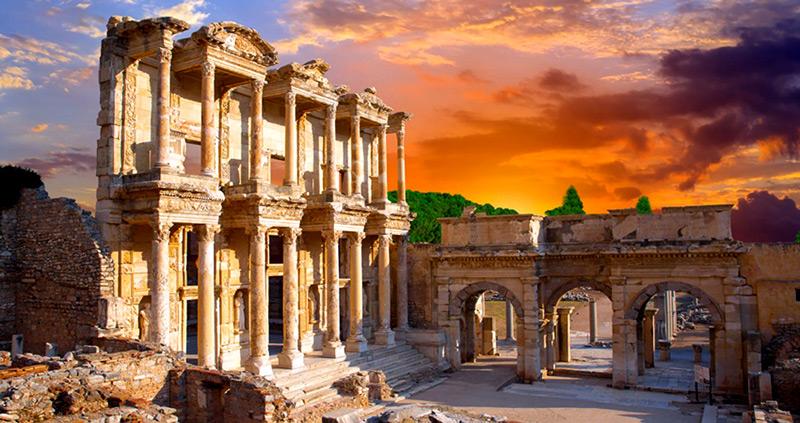
The port of Ephesus, one of the most popular ports in the Mediterranean, is located about 80 kilometres away from the city of Imir in Turkey. The city of Ephesus, known as the most famous Greek city in the Mediterranean region, is by the Aegean Sea and the Kaistros River.
This city has been subject to various invasions and attacks from time to time. The city also holds archaeological importance as a centre where evangelical Christianity has spread as well as a sacred place for Christian devotees.
There are two theories about the founding of the city of Ephesus. Some say that the city may have been built around the 11th century by a West Asian Ionian prince named Androklos, while others say that the Amazons, a tribe made up only of women, built the city and named it after their queen.
 Ephesus is special not only because of its location. The great Greek philosopher Heraclitus was also born in Ephesus. It is said that the city became very prosperous under the rule of the Lydian rulers who ruled the city of Ephesus in the seventh century.
Ephesus is special not only because of its location. The great Greek philosopher Heraclitus was also born in Ephesus. It is said that the city became very prosperous under the rule of the Lydian rulers who ruled the city of Ephesus in the seventh century.
History also records that women and men had equal status in the city of Ephesus during the period. It was a situation that was difficult to see in Greece and Rome during that era. In the ancient Roman city-states, women were not considered citizens. Because of this, the port city of Ephesus became a special one where women and men had equal opportunities.
The Temple of Artemis can be considered as a factor to raise the importance of the city of Ephesus archaeologically. King Croesius, a Lydian king who ruled the city, dedicated this temple to the goddess Artemis. He did not hesitate to give state support for the temple. Artemis is the goddess who presides over hunting, fertility, childbirth and the wild animals. She is also one of the Greek gods and goddesses who is most worshipped by the devotees.
One day in 356 BC, the temple was set on fire by a person named Herostratus, but the people of Ephesus had rebuilt it even bigger. The temple, which is four times larger than the Greek Pantheon temple, has also been named as one of the seven wonders of the world. Later, the temple was destroyed again, but no one has taken steps to restore it. Ruins of that temple and other important places are still well preserved in Ephesus.
The city of Ephesus can also be identified as a place where more efforts were made to spread Christianity. History records that in the first century AD, people like St. Paul and St. John converted a large number of devotees of the goddess Artemis who lived in the city of Ephesus to Christianity.
The house where Mary lived as well as the tomb of St. John can still be seen in Ephesus. The name of the city of Ephesus is mentioned many times in the New Testament of the Bible.
The city of Ephesus, which had flourished for many years, came to its end lately. In 262 AD, the Goths destroyed the city, including the Temple of Artemis, and after that the city was rebuilt, but the prosperity it had before was not seen again in Ephesus. The Christians dedicated the city of Ephesus to Mary in 341 AD. King Theodius also forbade the citizens of Ephesus the right to worship, and removed the rights women had until then. Parts of the destroyed Temple of Artemis were used to build churches.
After the conqueror Constantine the Great named Christianity the state religion of Rome, the Ephesians tried to maintain their city’s economy by attracting tourists to the religious shrines owned by the city of Ephesus.
However, due to an earthquake that affected the city in the sixth and seventh centuries AD, the city and its port were destroyed. Due to the constant invasions of the Arabs, the people of Ephesus left the city and fled to other provinces during the period. In the 14th century AD, under the rule of the Turks, the city did not reach its former prosperity, although it flourished to some extent again.
